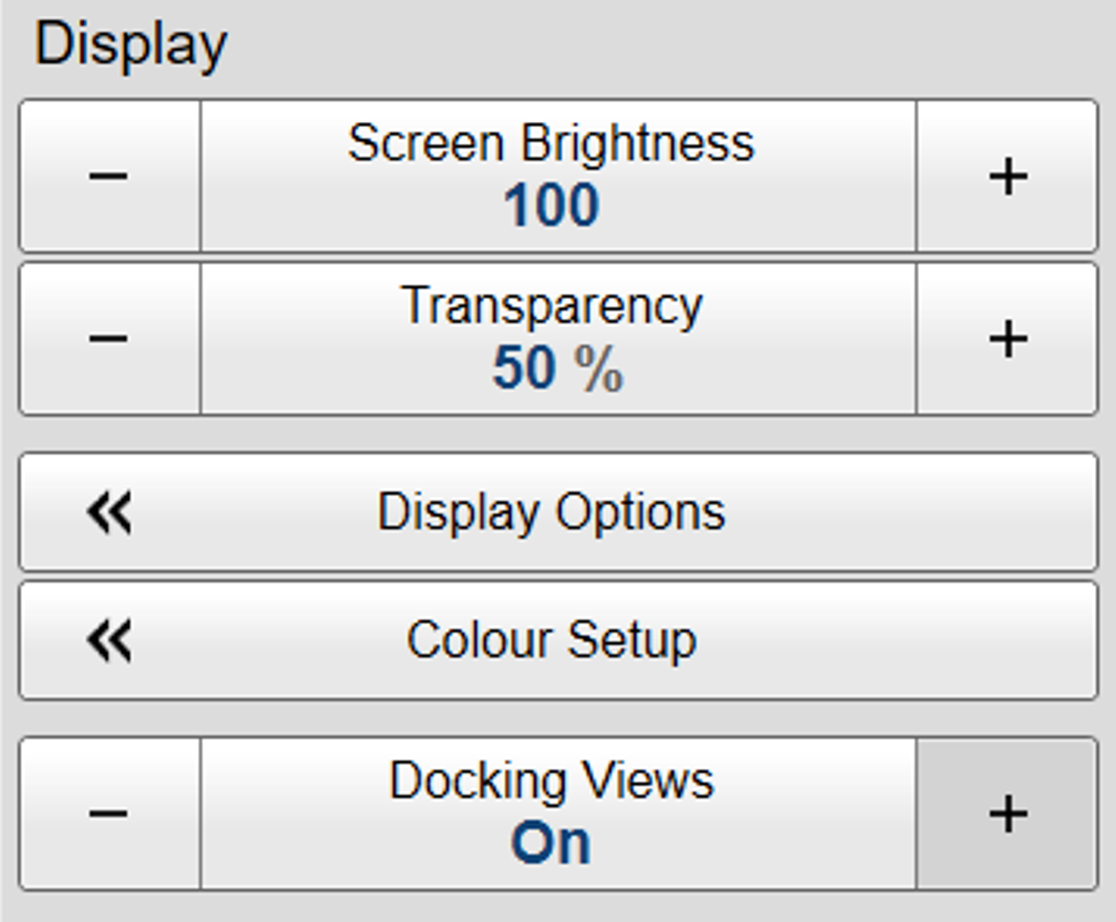Display menu
The Display menu provides basic functions related to the screen behaviour and presentation of data.

How to open
Select the Display icon.

The icon is located under the Main menu. Select the icon one more time to close the menu.
Description
Only brief descriptions are provided.
For detailed information about each function, page or dialog box, refer to the Functions and dialog boxes chapter in this publication.
Tip

If you do not need to use the menu system, you can hide it. This allows more space for the echo presentation.

Use Menu on the top bar to hide or show the menu.
When the menu system is hidden, it appears temporarily on the left or right hand side of the screen if you move the cursor
to that position.
The choices in the this menu depends on which view in the display presentation that is currently "active". The menu may therefore change from one view to another. The screen capture may not show you all the menu choices.
Functions and dialog boxes
| • | Screen Brightness The intensity of the light given off by the display presentation can be adjusted. You can use this function to increase or decrease the light from the screen to match the ambient light.
|
| • | Transparency When you open an information pane, you will see that it is transparent. The transparency can be adjusted.
|
| • | Display Options The top bar gives you fast access to key functionality and navigational information. It provides buttons to hide or show the menu, to monitor data recording, to open the Messages dialog box, and to open the context sensitive on-line help. Which navigation elements to see on the top bar is selected in the Display Options dialog box. It controls the location of the menu. You can also select which tooltips to appear when you move the cursor over the echo information. The dialog box is organised in pages grouping parameters for different parts of the application.
|
| • | Colour Setup The Colour Setup dialog box controls the presentation colours used by the EK80 system. This includes the palette ("skin"), the number of colours in use, and the colour scale when no Time Variable Gain (TVG) setting
has been selected for the presentation.
|
| • | Docking Views The echograms take up the largest part of the display presentation. The information from each channel is shown in a separate view. The Docking Views function provided by the EK80 system allows you to rearrange the physical positions of the views, and to change their sizes. You may add presentations, populate the presentations with windows and display these on different screens for better overview. Each presentation will create a new tab on the bottom bare, for easy access.
|